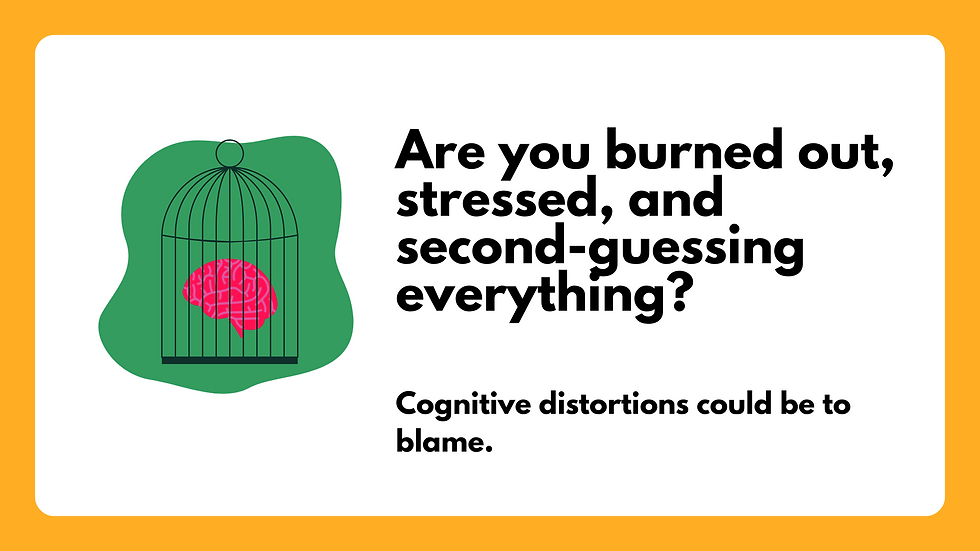The Manager's Guide to Mental Health and Burnout Conversations At Work
- Jenn DeWall
- Jul 24
- 3 min read

Let’s be real: burnout isn’t just a buzzword anymore. It’s the background noise of the modern workplace.
A recent study by Moodle and Censuswide found that 66% of American employees are experiencing some form of burnout in 2025. That means your team, your boss, your colleagues—maybe even you—are feeling it.
Before we dive into how to talk about it, let’s get clear on what we’re even talking about.
🧠 What Is Burnout, Really?
According to Dr. Christina Maslach, the leading researcher on burnout, it’s not just “feeling tired.”
Three dimensions define burnout:
Emotional exhaustion – Feeling drained, depleted, and unable to cope.
Depersonalization – Developing a cynical attitude toward your work or the people you serve.
Reduced personal accomplishment – Feeling like nothing you do is good enough or even matters.
In short: you’re not lazy, unmotivated, or failing. You’re fried.
Why Leaders Must Start the Conversation
When we don’t talk about burnout, it costs us—literally.
💸 A study in the American Journal of Preventive Medicine estimates that employee burnout costs U.S. companies $4,000 to $21,000 per employee per year in lost productivity, absenteeism, turnover, and healthcare.
🧨 And when we don’t address it, here’s who gets hit the hardest:
Gen Z (39%) and Millennials (40%)
Working parents (38%)
Professionals at small and midsize businesses (37%)
According to Robert Half, the top burnout triggers are:
Heavy workloads and long hours (40%)
Lack of support or recognition (30%)
Limited growth opportunities (27%)
So… how do you actually talk about it without making things more awkward or uncomfortable?
🗣️ How to Talk About Burnout with Your Team
Here are some strategies for starting real conversations—without the cringe:
1. Normalize the Conversation
Start with this:
“Burnout is real—and it’s okay to talk about it. You’re not broken or failing if you’re tired or overwhelmed. You’re human.”
Use team meetings, 1:1s, or internal newsletters to acknowledge it openly. Silence breeds shame. Permission creates possibility.
2. Model Vulnerability
If you’re feeling it, say so (appropriately). It creates safety.
“Last month was rough. I hit a wall and had to step back. It reminded me how important recovery is.”
Your transparency helps others feel less alone—and more empowered to speak up.
3. Ask Better Questions
Instead of:
“How’s everything going?”
Try:
“What’s been challenging lately?”
“Is there anything you need more of—or less of—to feel supported right now?”
Go beyond the surface. Invite honesty. This also requires you to listen without judgment. Remember, we all perceive stress differently.
4. Protect Recovery Time
Set the tone that rest is not earned—it’s required.
Don’t email at 10 p.m.
Take real PTO (and encourage your team to do the same)
Build breathing room into deadlines when possible
Even small shifts show people that recovery isn’t weakness—it’s leadership. Establish team norms, like when to email or expected response times - this way you can be sure recovery times are protected.
5. Connect the Dots to Growth
Burnout isn’t just about stress. It’s about a mismatch between people and their work environment.
Want less burnout? Offer:
Clarity around roles and expectations
Opportunities for meaningful feedback
Room to grow—and rest
Final Thought:
Burnout thrives in silence. But when leaders get honest, curious, and supportive, they become a buffer—not a source—of stress.
It’s not your job to fix everything for your team. But it is your job to create space for real conversations at work about work.
You’ve got this. And if you need help? I’ve got you.
🎤 I speak and coach on burnout, confidence, emotional intelligence, and mindset for high-achievers and leaders who want to thrive without losing their humanity (and sanity).
Want to know more? Email me at hello@jenndewall.com
Let’s make your workplace a little more human—and a lot less exhausting.



Comments